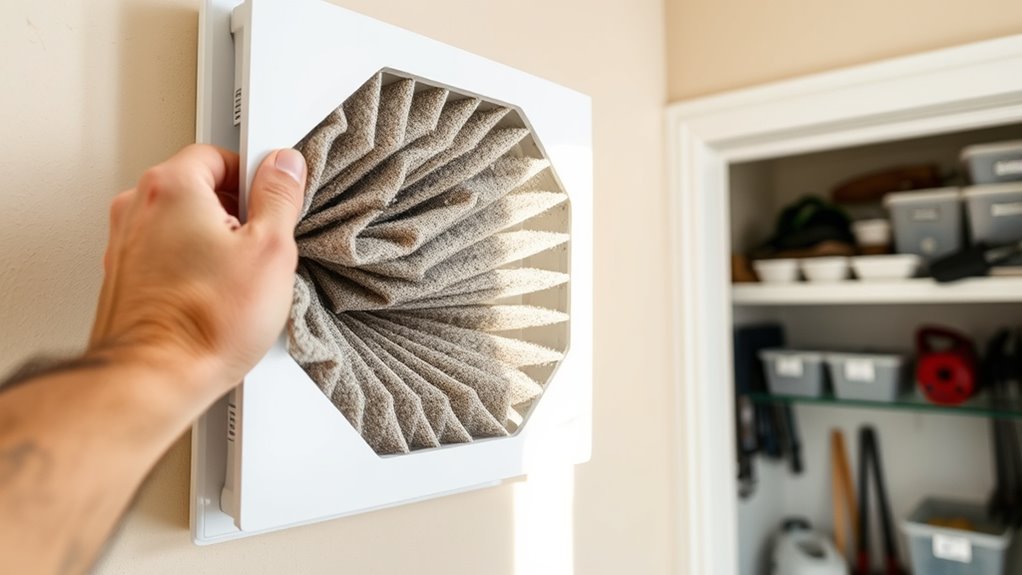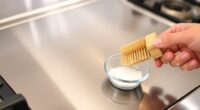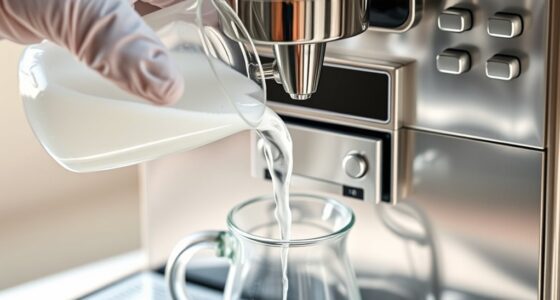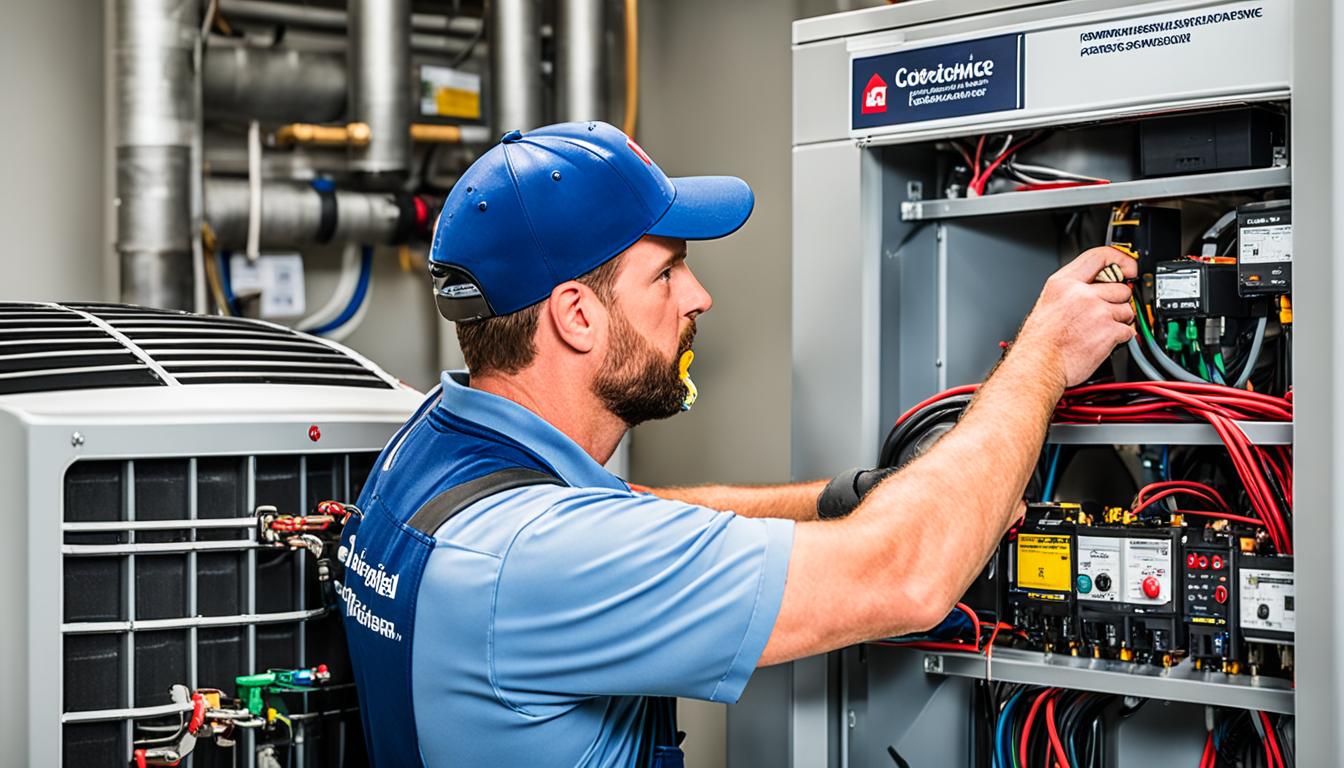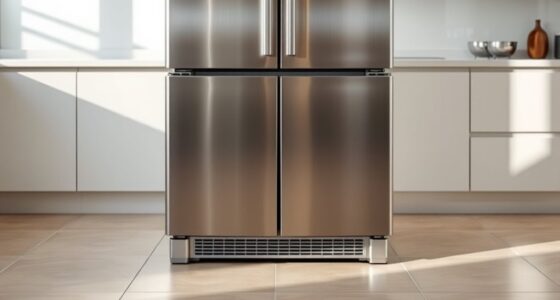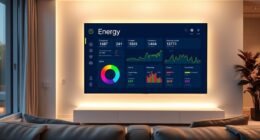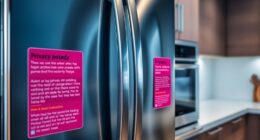To maintain your HVAC system and guarantee it runs smoothly, you should regularly replace or clean your air filters every 1 to 3 months, depending on usage and indoor air quality. Turn off your system before replacing the filter, note the airflow direction, and ensure arrows point the correct way during installation. Using the right size and inspecting filters often helps prevent system strain. Continue exploring for more tips to keep your system in top shape.
Key Takeaways
- Turn off the HVAC system before replacing or cleaning filters to ensure safety.
- Remove the old filter, noting airflow direction, and replace with a new one pointing in the same direction.
- Inspect filters every 1 to 3 months and replace or clean as needed based on usage and indoor air quality.
- For reusable filters, vacuum or wash them thoroughly and allow to dry completely before reinstalling.
- Regular maintenance improves HVAC efficiency, prolongs system lifespan, and maintains indoor air quality.
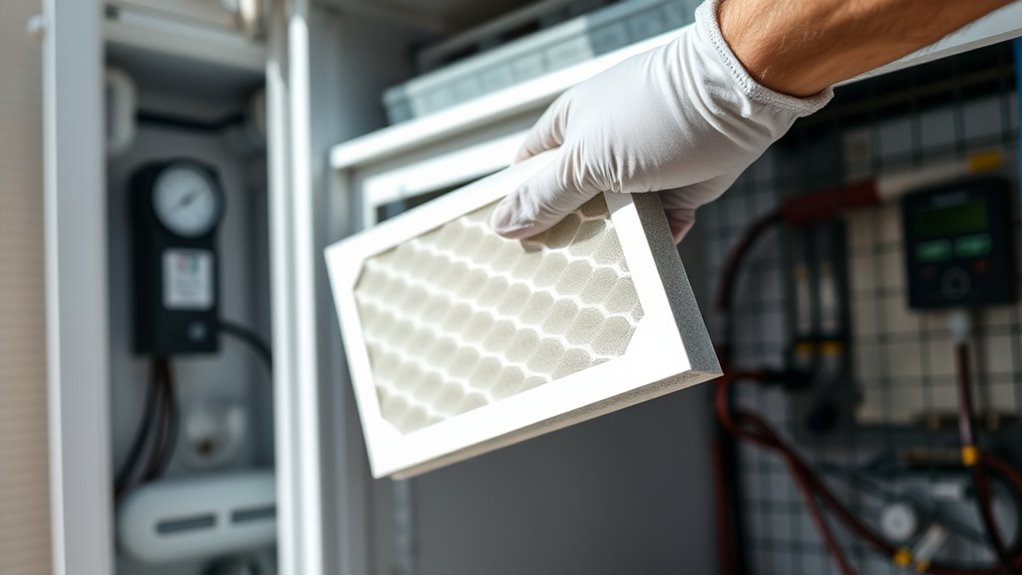
Regularly maintaining your HVAC system is essential to keep it running efficiently and extend its lifespan. One of the simplest yet most impactful ways to do this is by replacing your air filters on a regular basis. When you stay on top of this task, you not only improve the air quality in your home but also boost your system’s energy efficiency. Dirty filters restrict airflow, forcing your HVAC to work harder to heat or cool your space, which increases energy consumption and raises your utility bills. By performing DIY cleaning and replacement of filters, you can ensure your system runs smoothly without the need for costly professional service.
To start, always choose the correct filter size for your unit. You’ll find the size printed on the existing filter or in your HVAC manual. Regularly inspecting your filters is key—most experts recommend replacing or cleaning them every 1 to 3 months, but this can vary depending on usage, pets, and indoor air quality. When it’s time to change the filter, turn off your system to prevent dirt from circulating while you work. Carefully remove the old filter, taking note of the airflow direction indicated on the filter frame. Insert the new filter with the arrows pointing in the same direction to ensure effective airflow and filtration.
Choose the correct filter size and replace or clean every 1 to 3 months for optimal efficiency.
Performing DIY cleaning of your filters can extend their lifespan and improve their function, especially if they’re reusable. Gently vacuum or wash reusable filters with water and let them fully dry before reinstalling. However, most filters are designed to be disposable, so replacing them is usually the best route for maintaining maximum energy efficiency. Keeping filters clean and fresh allows your HVAC system to operate more efficiently, reducing strain on components like the blower motor and reducing energy waste.
Changing filters regularly also helps maintain good indoor air quality by trapping dust, pollen, pet dander, and other allergens. This is especially important if you or family members have allergies or respiratory issues. When filters are clogged or dirty, not only does your system work harder, but it also circulates contaminants, potentially affecting your health. Staying diligent about filter replacement is a simple task that can save you money in the long run, improve comfort, and promote a healthier living environment.
Frequently Asked Questions
How Often Should I Replace My HVAC Air Filter?
You should replace your HVAC air filter every 1 to 3 months to maintain good air quality and prevent mold growth. If you have allergies or pets, consider changing it more frequently. Regular replacement helps your system run efficiently and reduces mold buildup, which can harm indoor air quality. Keep an eye on the filter’s condition and replace it promptly to ensure a healthier, cleaner environment in your home.
What Type of Air Filter Is Best for My System?
Choosing the best air filter means balancing material quality and efficiency ratings. You want filters with high-quality materials like pleated fiber or electrostatic media that trap dust and allergens effectively, yet don’t restrict airflow. Look for filters with a MERV rating between 8 and 13, ensuring ideal efficiency without overburdening your system. Ultimately, select a filter that matches your HVAC’s specifications and your indoor air quality needs.
Can I Clean or Reuse My Air Filters?
You can’t typically clean or reuse standard air filters, as their lifespan is limited and they’re designed for one-time use. However, reusable filters exist and can be cleaned regularly, extending their lifespan and improving efficiency. To keep your HVAC system running smoothly, check the filter’s manufacturer instructions for cleaning guidelines, and clean or replace your reusable filter as needed to maintain good air quality and system performance.
How Do I Know if My Air Filter Needs Changing?
You’ll know it’s time to change your air filter when your home’s air quality drops, or you notice reduced airflow. Check the filter’s lifespan, typically every 1-3 months, depending on usage and environment. If it looks dirty, clogged, or dusty, replace it promptly. Maintaining a fresh filter keeps your HVAC running efficiently, improving air quality and preventing strain on your system. Don’t wait too long—your system and indoor air will thank you.
Are There Signs of HVAC System Strain Related to Filter Issues?
Did you know that clogged filters cause up to a 15% reduction in airflow? When your HVAC system struggles with filter clogging, you’ll notice signs like inconsistent temperatures, longer running times, and increased energy bills. Reduced airflow indicates strain, meaning your system works harder to circulate air. If you see these signs, it’s a clear sign that your filter needs changing to prevent further system strain.
Conclusion
By regularly replacing your air filters, you’re giving your HVAC system the ultimate boost it needs to run smoothly. Think of it as giving your home’s air quality a superhero cape—keeping it fresh, clean, and free of dust bunnies! Don’t let clogged filters turn your system into a sluggish snail. Stay proactive, check those filters often, and enjoy a house that feels as cool as an iceberg and as fresh as a mountain breeze!
